It's green black walnut season. I don't know how people figured out you could use unripe walnuts in cooking, but I'm sure glad they did, and after you try making fermented green walnut molasses recipe, I think you will be too, even if you don't like the taste of black walnuts cracked from the shell.
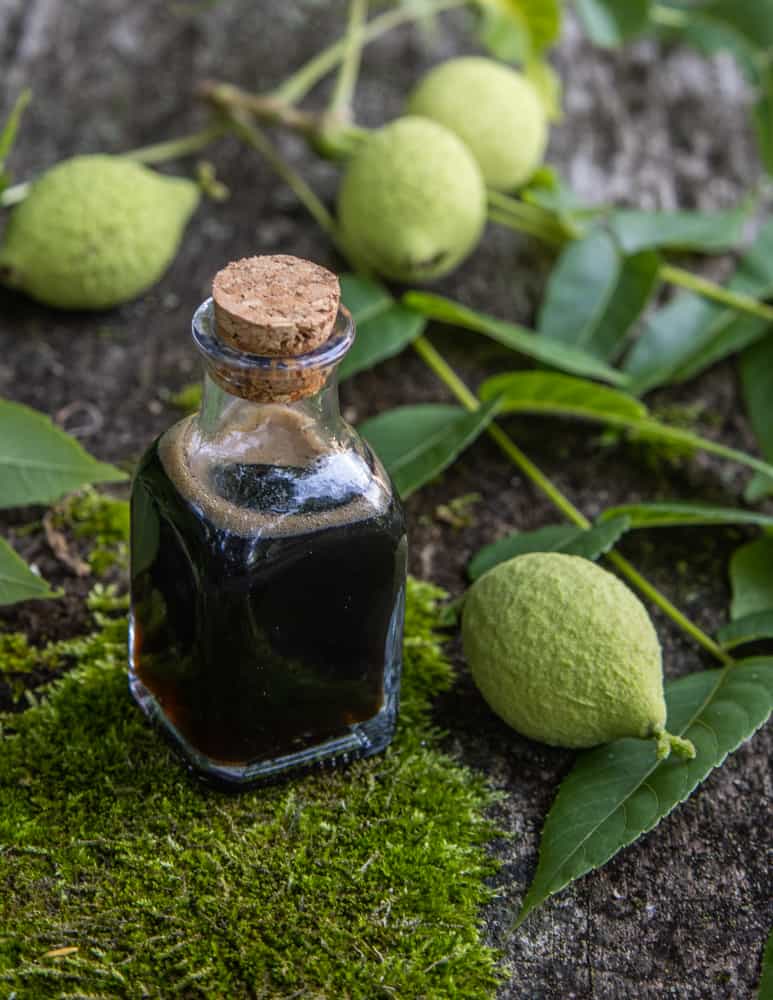
Unripe black walnuts are pretty well known in the wild food community, and I think It's a pretty good bet that's mostly due to the popularity of Nocino, the Italian black walnut liquor (Vin de Noix is the French cousin that includes red wine in the maceration, and I actually prefer it to nocino. The recipe for my Vin de Noix is in my book).
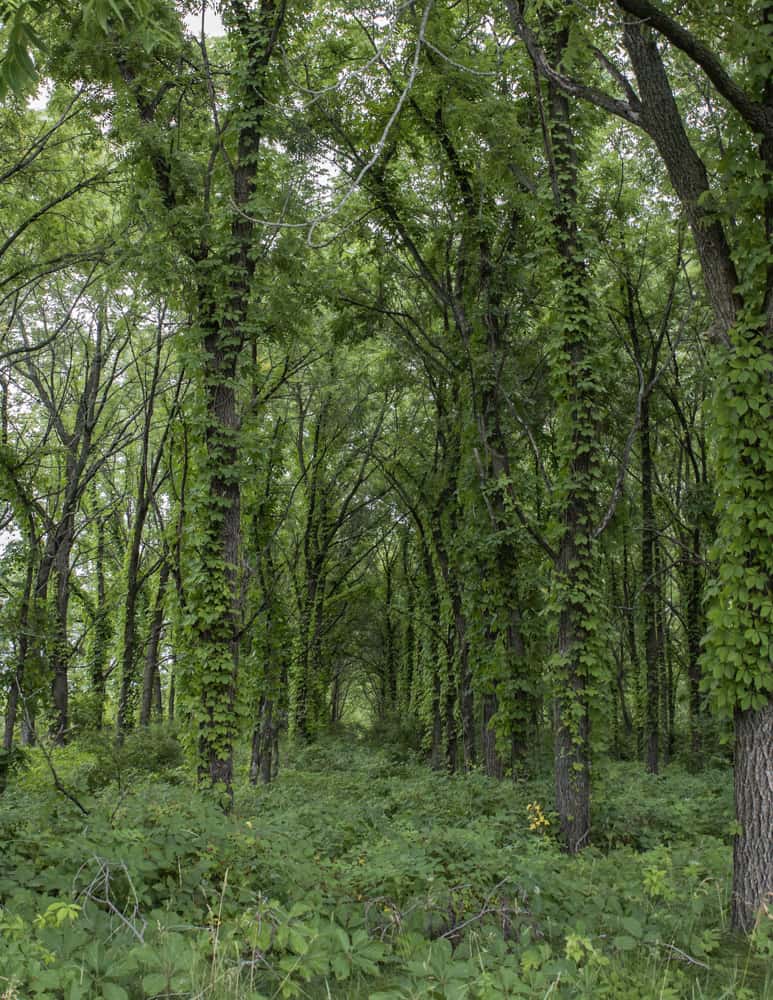
In order to really appreciate the green walnut honey, it's useful to understand what things made with unripe walnuts typically taste like.
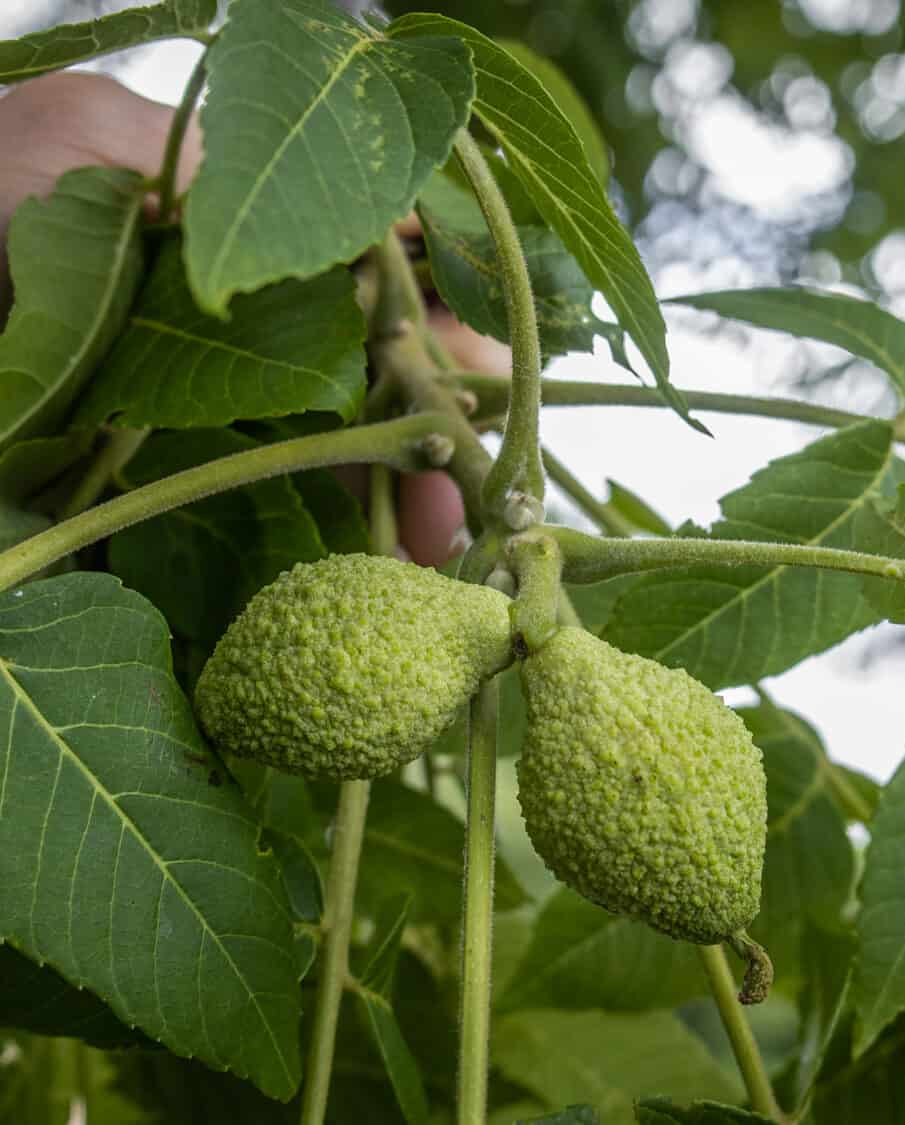
For both Vin de Noix and Nocino, the process goes like this: cut some green walnuts in half, then add them to a mixture of alcohol and spices, allow it to macerate (sit/marinate) for 30 days, then strain, mix with a sweetener, jar, and age to allow the tannins to soften, which takes a long time-6 months at the very least. Saying that the tannins are an obstacle is an understatement.
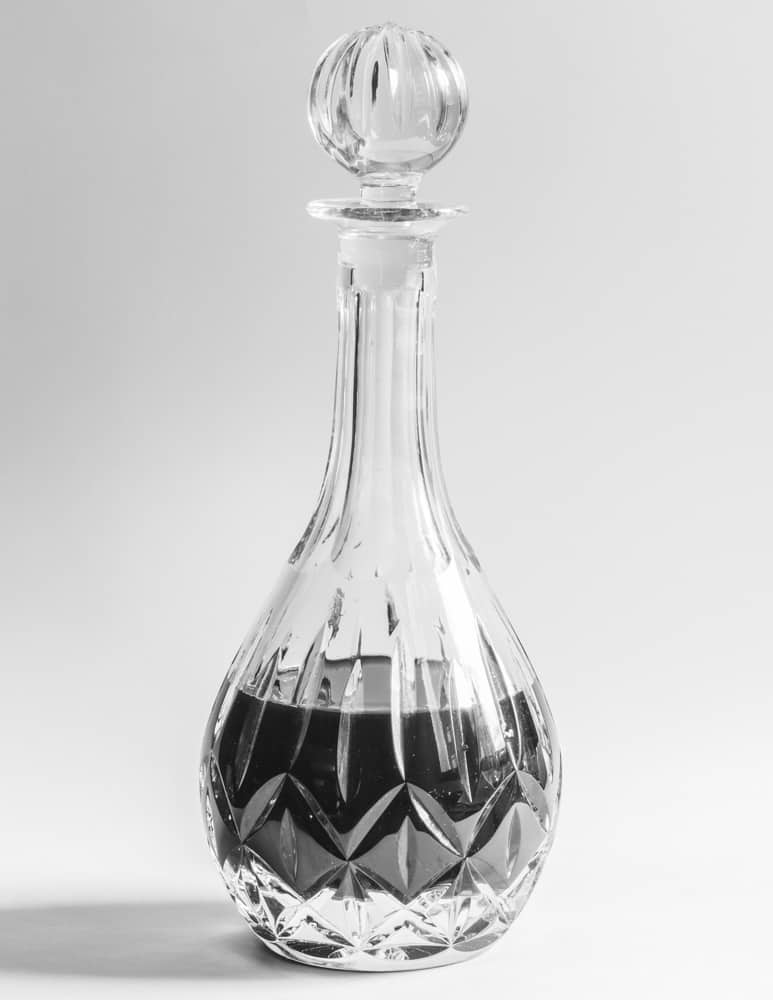
After you crack open a bottle of either walnut liquor, you'll have a reasonably mellow tipple. Nocino is firmly in black licorice-Jägermeister territory, Vin de Noix more of a sweet vermouth. But, as anyone who has handled an unripe black walnut knows, black licorice or Jägermeister couldn't be farther from what the young nuts smell like.
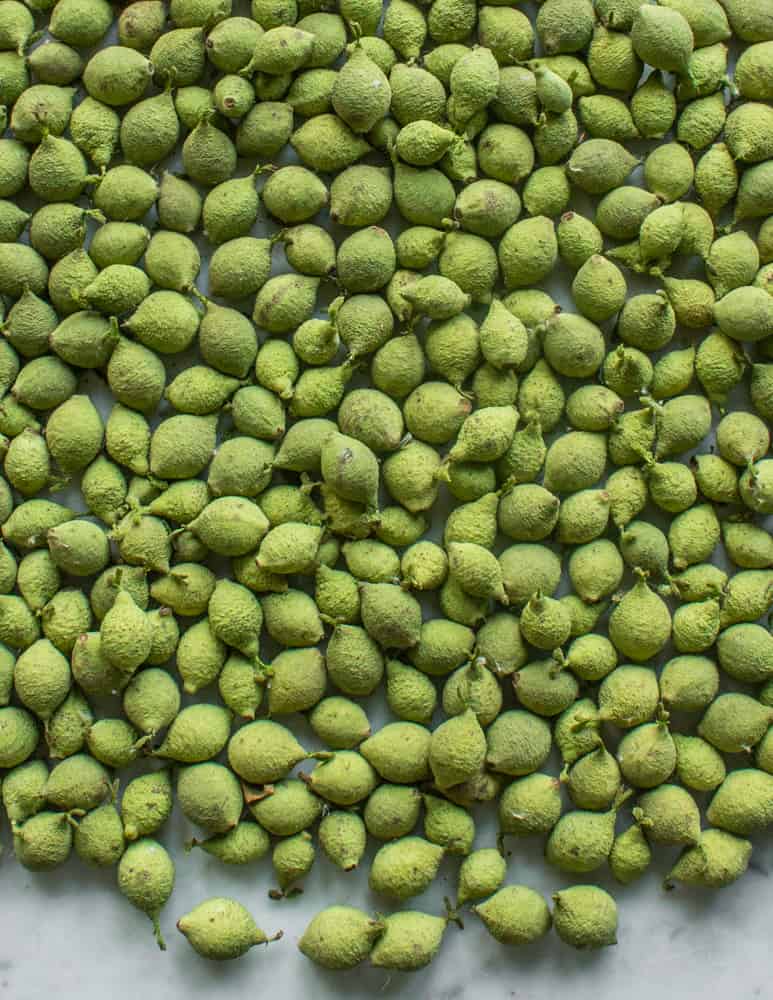
Pluck an unripe black walnut from a tree, or even pick one from the ground the tree has rejected (I usually avoid rejected green nuts for culinary purposes as they may be degraded on the inside) and the first thing you'll notice is an strong, toe-curling aroma of green citrus peels. I've smelled a lot of interesting things over the years, but the smell of the green nuts is one by far one of my all-time favorite scents.
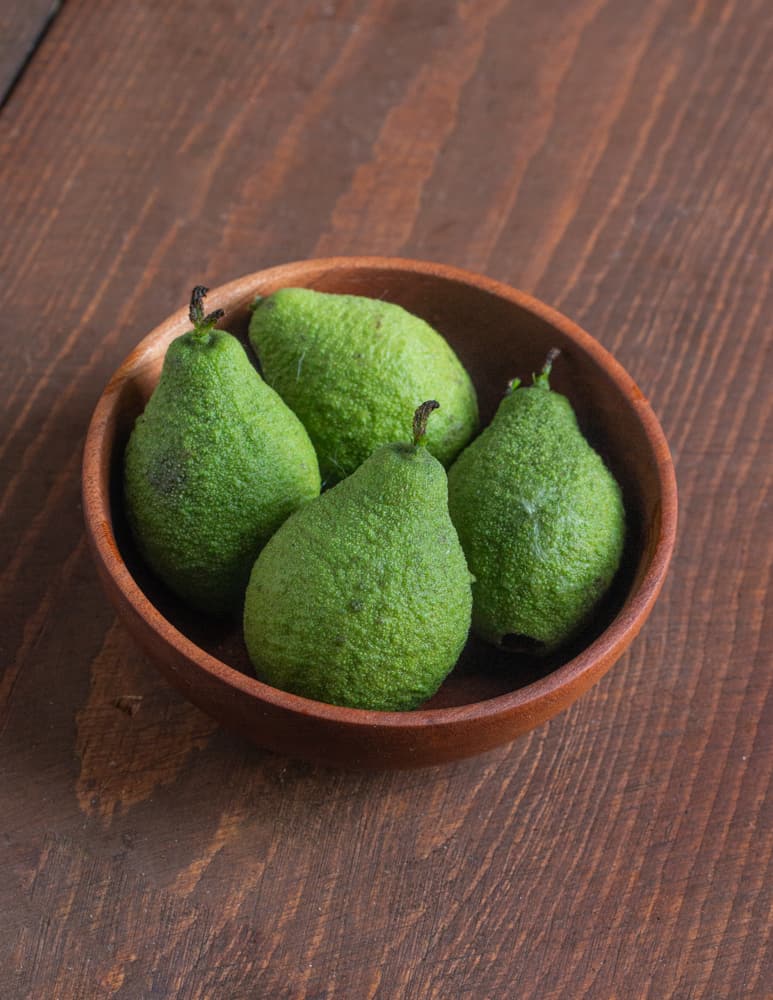
Now, I like Nocino, and I probably like Vin de Noix a little more, but I would be lying if I said that every time I open a bottle I'm not a tiny bit disappointed that the exciting aroma of citrus so rich in the green nuts isn't noticeable at all.
I don't know why the aroma changes after a long sleep in alcohol, but it does, and for years I've been trying to figure out a way, any way at all, to capture the scent of the fresh nuts.
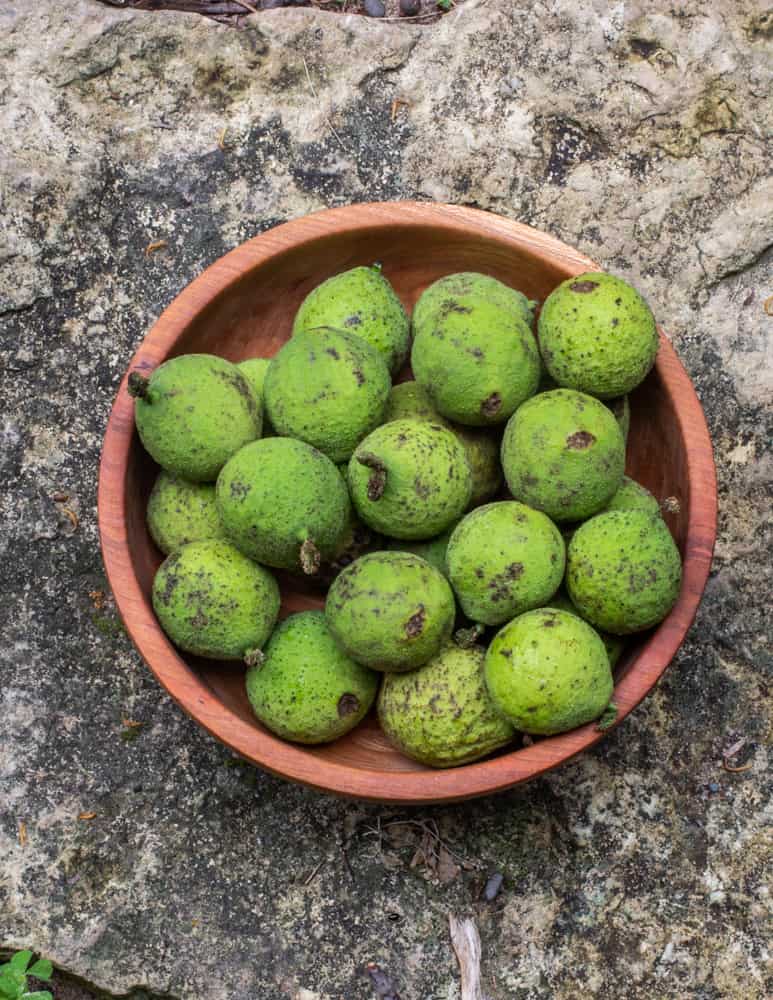
Story goes that a few years ago I was reading an old book, and, unfortunately, for the life of me I now can't remember what it was. I think it was from Ireland, or the U.K., but I could be wrong. Either way, in the preserves section, like many old books I've read from the 18-1900's (Housekeeping in Old Virginia being a great one) there were a number of preparations calling for green black walnuts. One of them was "Green Walnut Syrup". I made a note of the name in a file, and forgot about it for a few years.
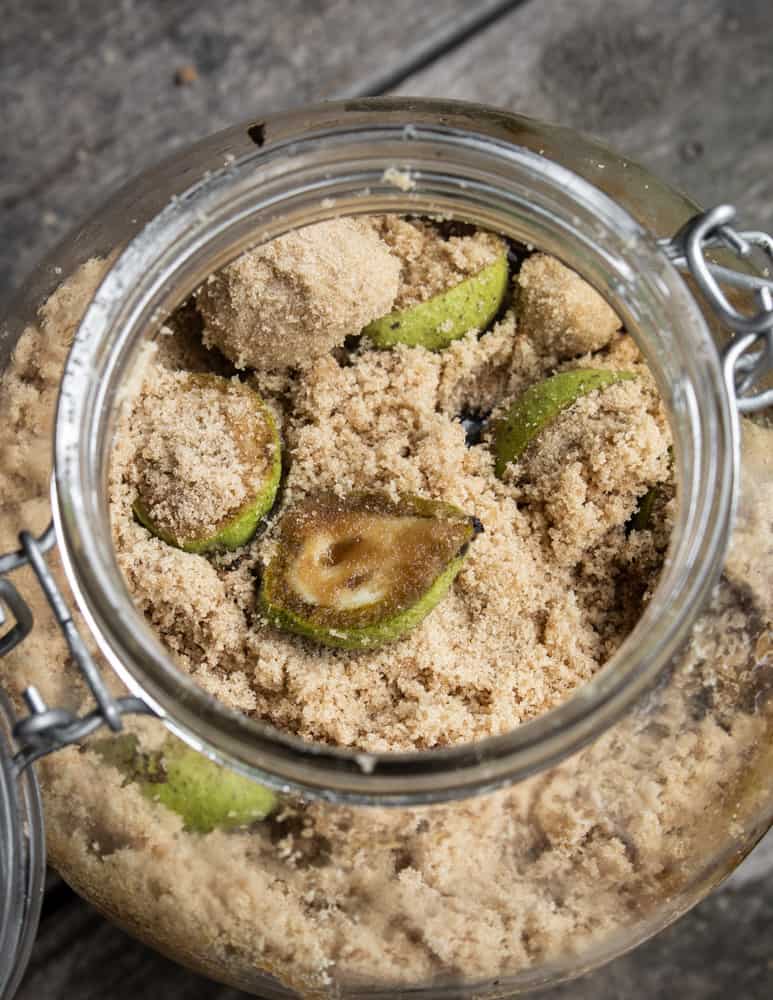
Woodsy Flavor, reduced tannins
I didn't leave any notes on how the original syrup was made, but I have syrup macerations down to a science after making mugolio from every unripe part of every species of conifer tree part I can find in my area. If you're not familiar, naturally fermented syrups made from pine cones are a show-stopper, partly because they give you the unique aroma specific to the conifer species used, without the often terribly strong, astringent aftertaste you would get from chewing on a raw pine cone (side note, unripe cones of Pinus siberica and Abies balsamea are so mild you could almost munch on them raw as a snack).
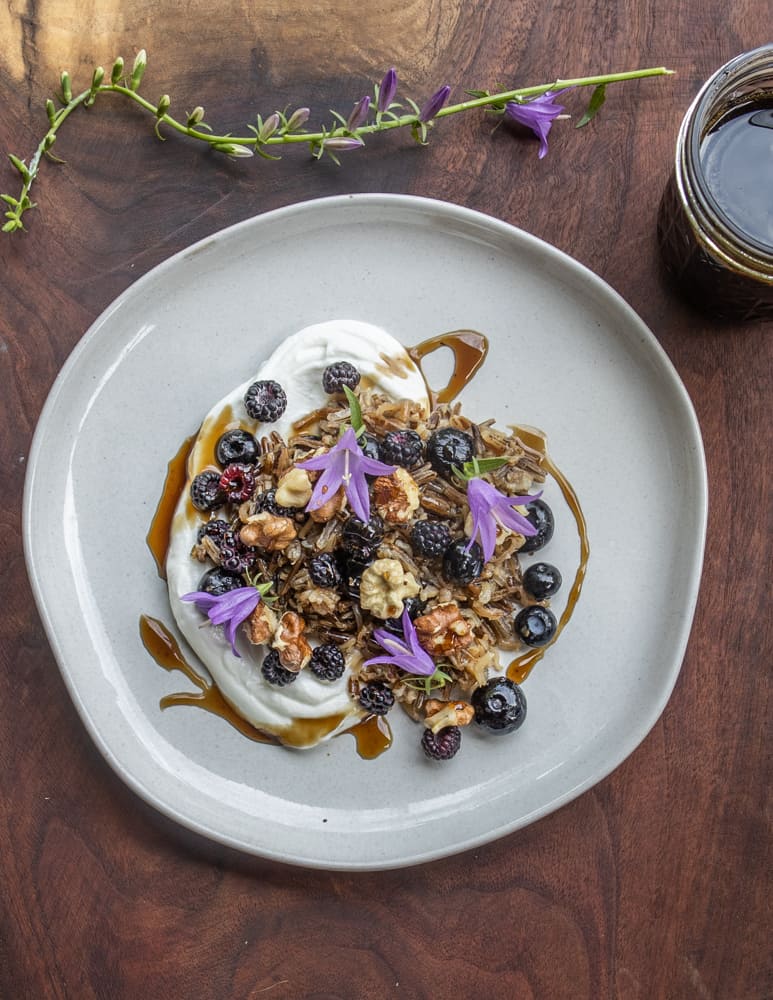
Knowing how incredibly tannic green black walnuts are, I had a hunch that using the same proportions of sugar to unripe black walnuts that I use with pine cones and spruce tips to make mugolio might create a similar product: a thick, non-tannic black walnut syrup, hopefully with a whiff of the citrus aroma I'd been yearning to bottle up and contain since the first time I smelled it.
The finished product will have the taste of green citrus at first, but will mellow with time and develop into something all it's own. The big takeaway of this process, is that this is a way to extract black walnut flavor without having to age out the tannins, and that is pretty darn cool, even if the citrus aroma I've always dreamed of capturing mellows over time. That being said, there will be some tannins in the finished product, but it's nowhere near something like nocino that takes months and months to relax.
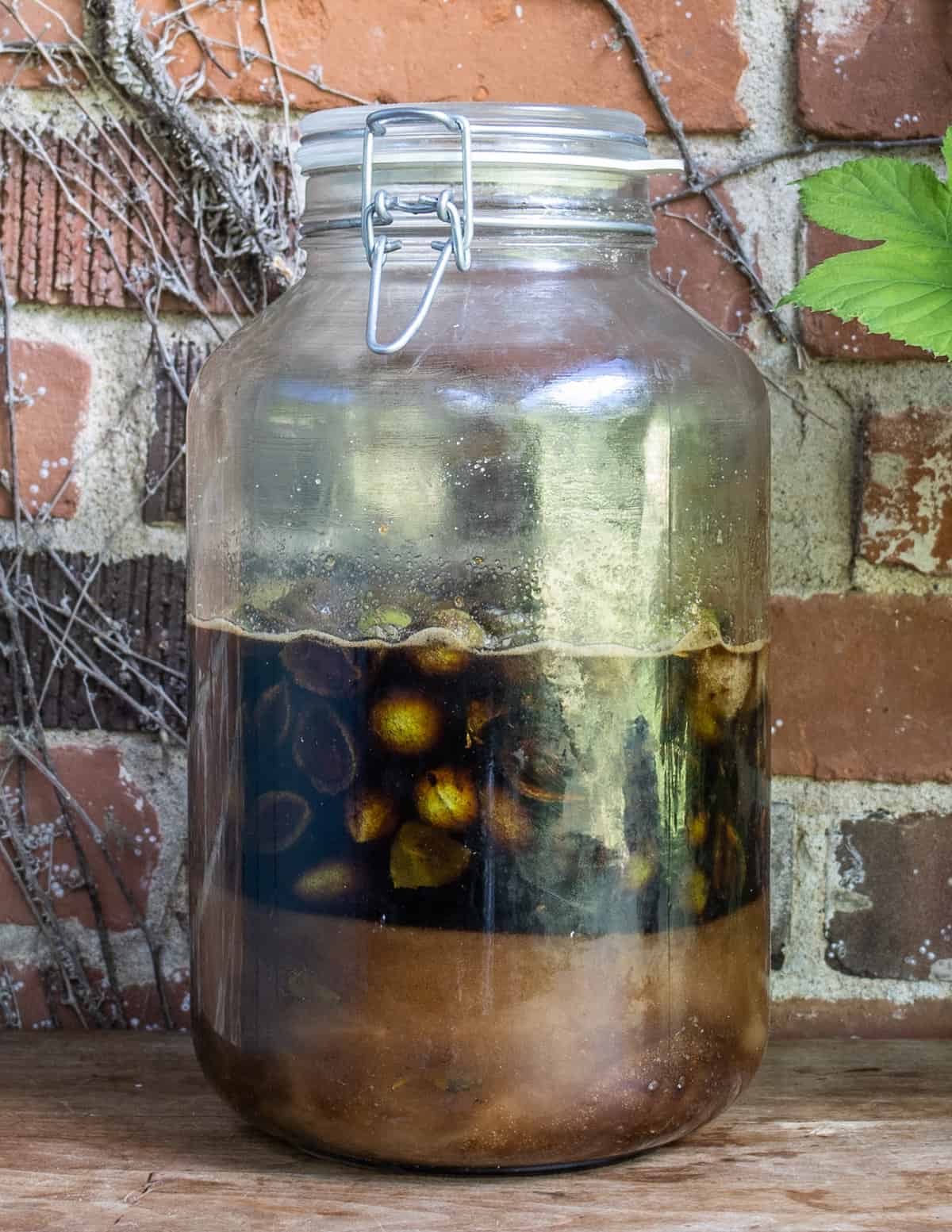
Maceration Magic
The process is exactly the same as for Mugolio. Take your green walnuts, cut them in half, then mix them with twice their weight in good, unbleached sugar, and put them in a container, preferably a glass mason jar so you can watch the show.
After only a day or two, the alchemy begins as the sugar coaxes out what seems an impossible rush of natural water from the green walnuts.

After just a few days, the walnuts will be swimming in liquid, and there will be visible bubbling as the mixture begins to ferment and bubble, pressurizing the contents of the jar and letting out a satisfying hiss when the lid is opened.
After at least 30 days, you scrape out the sugary walnut sludge into a pot, bring it to a boil, then strain, discard the walnuts, and bottle the syrup. Ah Viola.
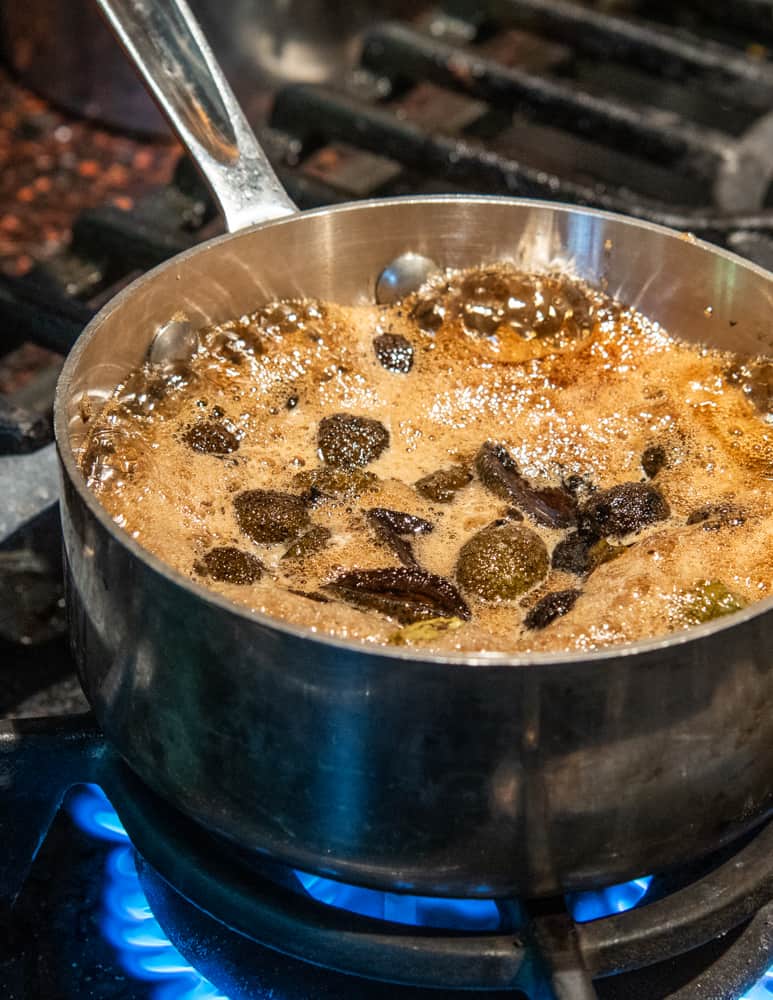
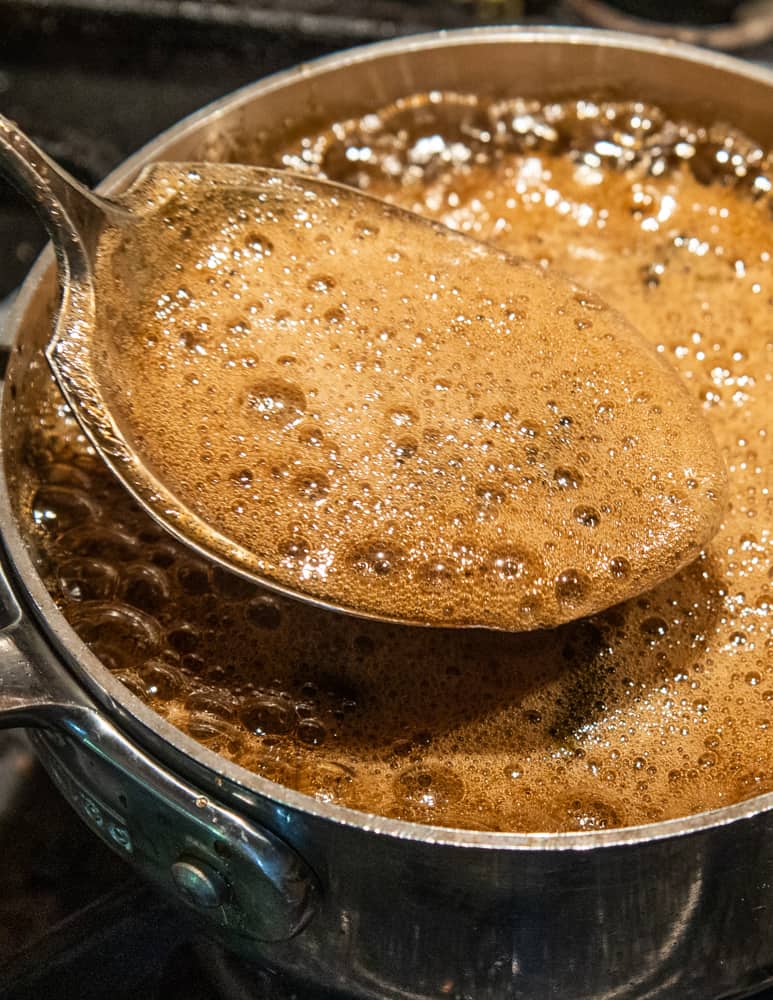
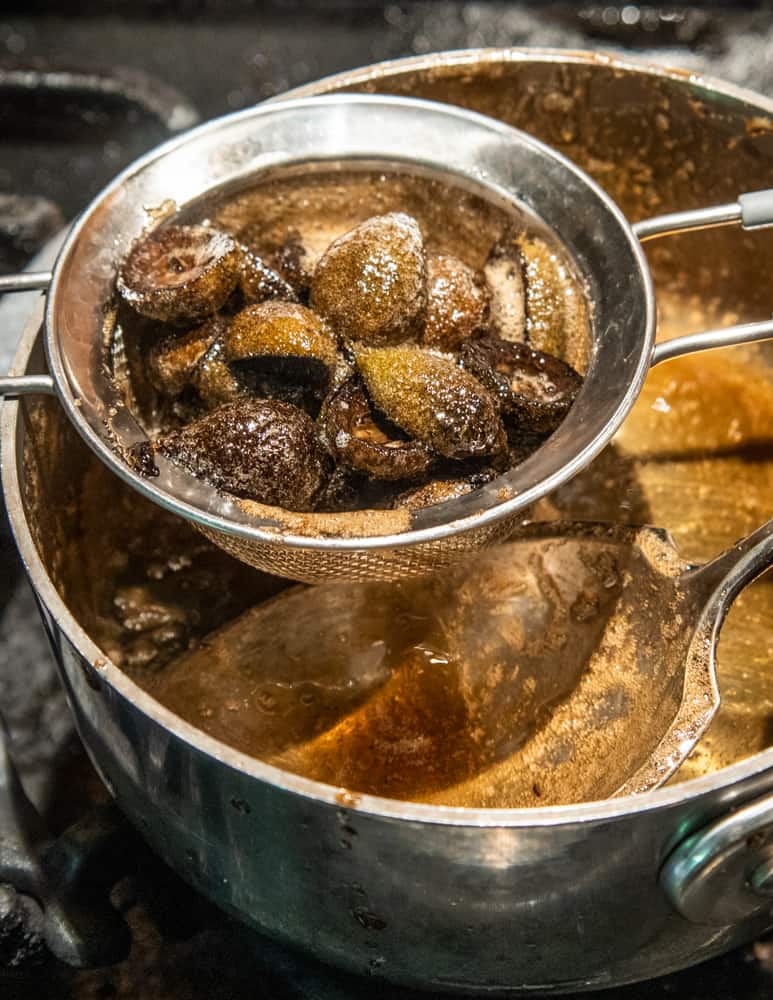
How to use it
While the flavor is not as intense as mugolio, it's still fun. You could use the finished green walnut molasses anywhere you would use maple syrup, and it loves yogurt and creamy soft cheeses. I've also used it for baking in things like granola, which worked, and gave it a darker color.
There's one thing I'm excited about more than any other though, and it's part of what was pushing me to make this is and taste the finished product a bit early. If you follow me on Instagram and Facebook, you may be familiar with the Ida Graves project-my collaboration with a local distillery in Alexandria Minnesota to create distinctly Midwestern liquors flavored with wild herbs and ingredients I harvest.
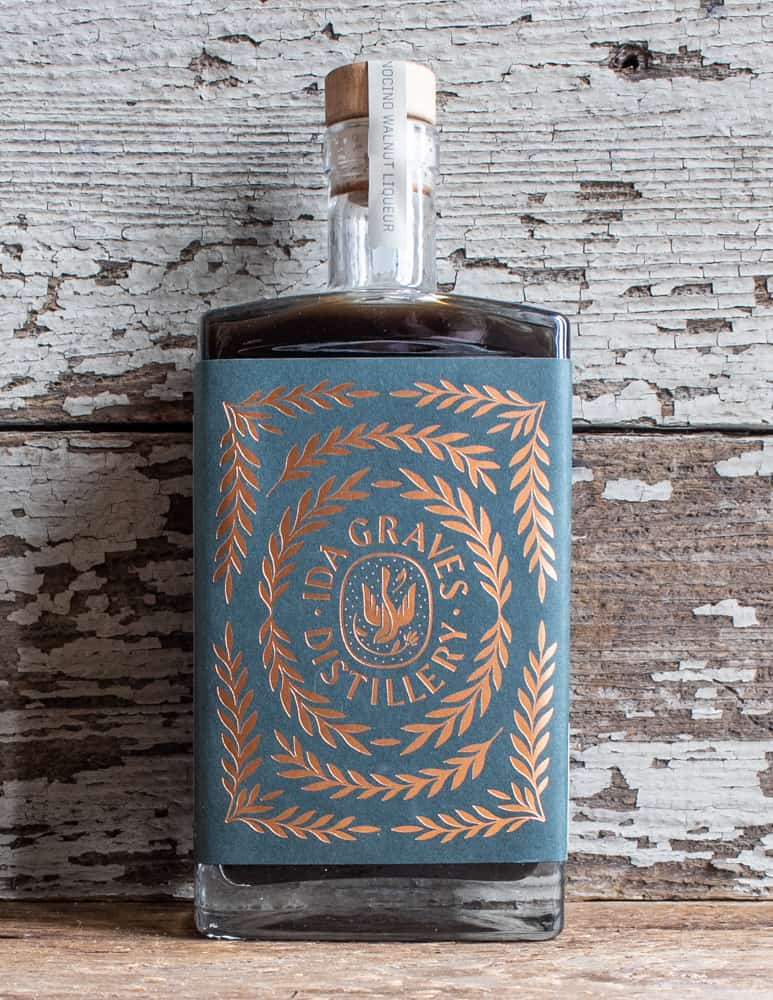

This will be our second year making wild spirits, and, as you may have guessed, nocino is one of them. One of my old chefs from Italy would sweeten nocino with white sugar, I've come to prefer maple syrup over the years.
The scheme I'm hatching here though, is that using black walnut honey to flavor nocino might just be the ultimate version: a study in the flavor of black walnuts only the forest can provide.
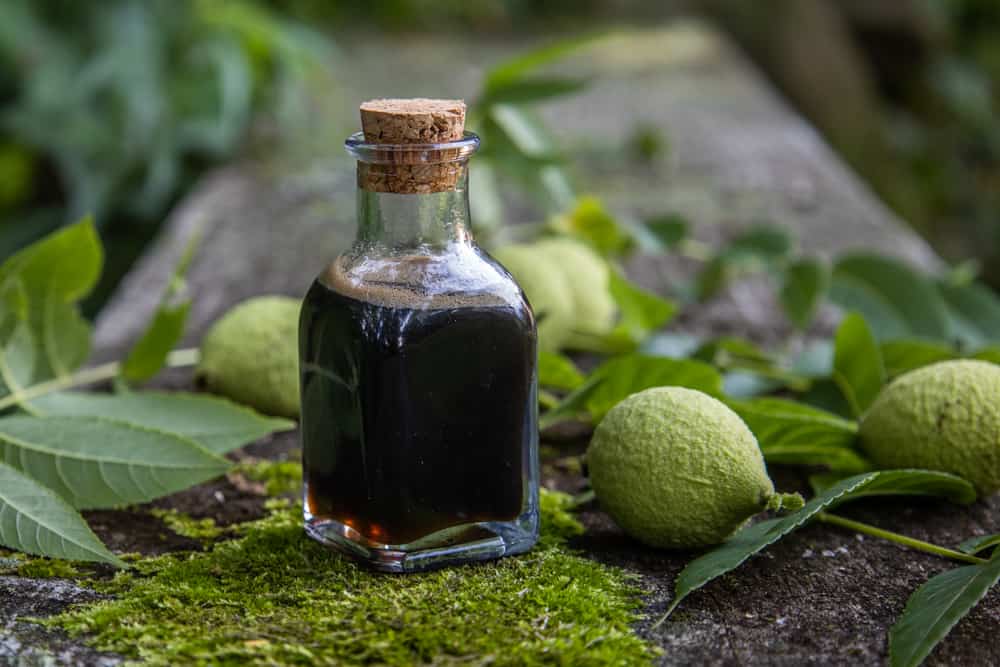
Black Walnut Molasses
Equipment
- 1 Mason jars you'll need two quart jars or one half gallon jar
Ingredients
- 1 lb (roughly 15-22) young unripe black walnuts or butternuts soft enough that they can be cut through with a knife
- 2 lb Brown sugar or Turbinado sugar
Instructions
Harvest and Prep the Nuts
- Harvest unripe black walnuts directly from the tree. Younger is best, smaller than a ping pong ball. Older, more round nuts may be more tannic.
- While it may be tempting to harvest walnuts that have already fallen, you will want to cut some of them in half to make sure they're pearly white and clean on the inside, without any spotting or deterioration. Wash the walnuts and reserve.
- Wearing gloves, cut the walnuts in half using a heavy knife on a cutting board that won't stain. Older recipes often mention crushing or pounding the unripe nuts, which you could also do, but beware of splattering juice.
- Mix the walnut with the sugar, then pack into a container that can accomodate the entire mixture. For the amount listed, you would want a half gallon mason jar.
Maceration
- Allow the walnut-sugar mixture to sit at room temperature or outside for at least 30 days, and up to a few months, opening the jar occasionally to release carbon dioxide as the mixture will ferment. Shake or stir it occasionally to coat the nuts in the fermenting syrup and help prevent mold.
Boiling, straining and storing
- After at least 30 days, scrape the sugary walnut mixture into a non-reactive sauce pot with high sides. On high heat, bring the mixture to a simmer to melt the syrup, turn the heat off and remove the walnuts using a slotted spoon and discard.
Finishing and Jarring
- Bring the syrup back to a brisk simmer, turn off the heat and wait a minute for the foam to settle, skim off the foam. Pour the piping hot syrup into the jars leaving ½ inch of headspace, screw on the lids tightly.
- The cooking process should take about 10 minutes. You're only melting the syrup and getting it hot, not reducing it.
- Process the jars in a water bath, 10 minutes per pint. Some people simply turn the jars upside down and allow to cool and seal. The syrup will last for years and doesn't need to be refrigerated until it's opened. It can be a little tannic at first but mellows as it ages.

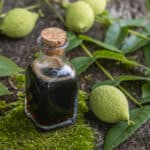
Catrin
Hi Alan!
I’m really excited to try this recipe but all I have are white walnuts, which are kind of hairy and sticky on the outside. Would this recipe still work with the white ones?
Alan Bergo
Yes as long as they’re tender enough to cut. Remember they ripen a whole month earlier than black walnuts so you need to get them quick.
Catrin
Good to know!! Thank you!
Megan
I made this recipe at the end of last August (2024) and I'm just now processing them. They're a little stinky do you think it's still okay to use them?
Alan Bergo
I need more information here to be able to give you advice. I need you to walk me through exactly what you did.
Teresa
Can I use honey instead of sugar?
Alan Bergo
Absolutely. Honey contains more water so the syrup will be loose, you’ll need to reduce it slightly to get a spoon-coating consistency. Don’t worry about exact proportions, just cover the nuts in honey.